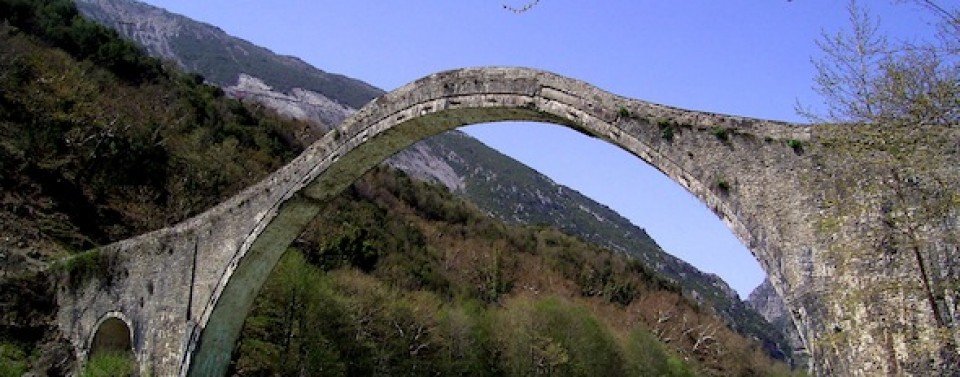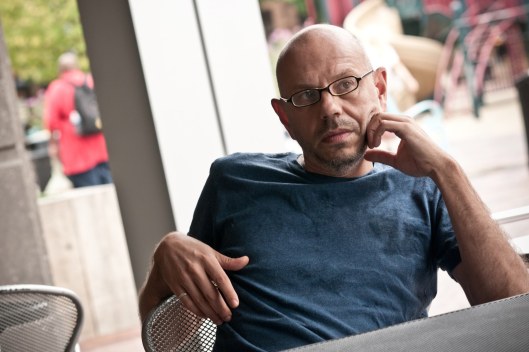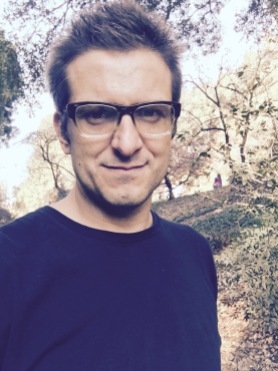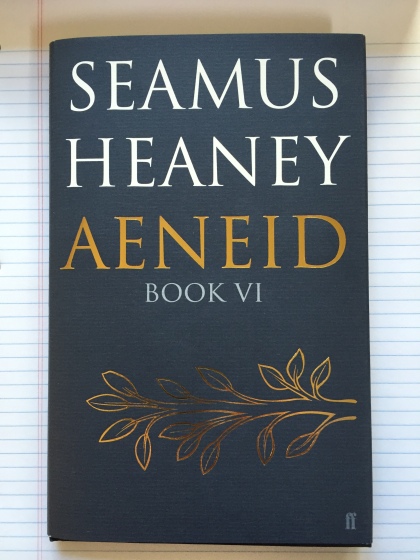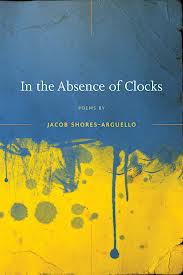 by R. Sebastian Bennett
by R. Sebastian Bennett
Harold Jaffe’s latest work, Revolutionary Brain, is a collection of “Essays and Quasi-Essays” which utilizes a variety of rhetorical strategies borrowed from fiction and nonfiction to dissect, analyze, and diagnose the societal and psychological dysfunctions which characterize the current human condition. In its broad, omnidirectional sweep, the book offers detailed findings as well as guidelines for solutions. This beautiful, expansive text is an acute cry for awareness of society’s flaws and, simultaneously, a curative voice of hope.
Jaffe foregrounds his theses with the directive that we, as human beings, share a tacit obligation in the midst of our crisis: “Don’t avert your eyes.” This injunction to maintain awareness as the first step in solving societal issues is a prescription to observe civilization and its detriments consciously, even if such observations entail an internalization process which is deeply disturbing. For the artist, this process may lead to the birth of a particular kind of art, “Crisis Art,” which functions simultaneously as a creative outburst from the artist and–via the manifestation of that creativity–a further opportunity for other citizens to develop greater social awarenesses.
Crisis Art entails taking a stand, protesting, documenting, unmasking—literally and figuratively—societal elements which negatively impact our world. Jaffe carefully analyzes the aesthetic dimensions and components of Crisis Art, which is “directed rather than disinterested,” “closely related to art as process,” and “keenly aware of text and context.” It entails “an energy and focus which more than compensate for its relative lack of refinement.” The crisis artist, like all of us, has the “obligation… to bear witness.” And that obligation functions in opposition to governmental and corporate quests to maintain citizens’ conformity and complacency, under the guise of maintaining order for public interest. Such a guise is mocked by Jaffe in “Iso,” where a narrative voice waxes pseudo-eloquent concerning social control: “Too many creatures dreaming, moving sideways, promote chaos.”
Much of Revolutionary Brain comprises, in a variety of rhetorical formats, a pondering and analysis of specific examples of societal dysfunction and their macroscopic implications. Ultimately, the text goes beyond these specified and artfully rendered depictions of maladies/mal-adaptations/mutations to answer the question: What are the veracious and most promising opportunities for transition and amelioration? In Revolutionary Brain, these opportunities carry an echo of the truest American hopes for democracy and humanity in their implicit appeal to a deism in the spirit of Walt Whitman and Thomas Jefferson, a would-be entreaty to “Nature’s God” for moral guidelines and fortitude. This is an appeal for a re-prioritization of natural beauty, justice, reason, equality, and the freedom to live a life unfettered by toxic, institutional pressures of any form.
However, while the book supports a broad, naturalized orientation to a spiritual dimension, again in congruence with Jefferson, it fervently rejects the current trends toward religious influence on government, manifest even in countries as supposedly secular as France and the United States. In “Hijab,” Jaffe addresses a French edict that “Islamic females of lycée age are required to remove their head and face coverings while in the lycée,” while nuns are allowed to wear head coverings—as they are “picturesque…[and] have an aesthetic dimension.” Jaffe unmasks this supposed “aesthetic” dimension as “the sacred prepuce of… white male leaders” which serves to support discrimination against religious traditions not directly aligned with that of the reigning governmental regime. Jaffe leaves the reader to ponder the implications of governmental/religious fusion in the United States; however, he is unequivocal about the extent of that synthesis:
Is the US… a theocracy?
Without question
Notably, toxic social pressures detailed in Jaffe’s book are not merely commercial or sociological, but rather often scientific manifestations of the institutional goal of profiteering from human illness, weakness, or character flaws. Such dynamics are evident in Jaffe’s text “Freeze-Dry,” where parents ghoulishly attempt to cryogenically restrict the physical growth of their disabled child, a process which calls to mind an exponentiated, sci-fi version of foot-binding. Along similar lines, in “Anal Acrobats,” the climate change phenomenon is posited as the net result of world leaders’ self-serving quests for power and votes, and their self-imposed blindness to the plight of decimated animals such as “a polar bear cub dying in the Antarctic because of ice melt.”
Jaffe’s scope is not focused merely on broad institutional or thematic issues. Revolutionary Brain also details individual psychological aberrations caused by particular societal conditions. These aberrations often have a sexual component, and several of Jaffe’s texts address the hypothesis that the ever-increasing, main-streamed intake of porn, especially highly-deviational porn, is a response to/escape from an increasingly decimated civilization. The mechanism for this seems to arise from severe external disruptions in the normal bio-social sphere, causing a form of psychological imbalance akin to that seen in an animal which starts to behave in a physically deleterious or anti-social manner due to disruptions or abnormalities in its environment. As Jaffe puts it, “We need extremity beyond extremity to dodge the collective torment we are forbidden to acknowledge.” In some cases, the sexual aberrations and deviations are aided and abetted by a form of the technological fetishism which has become so prevalent today; in “Things to Do,” airline baggage handlers conform to their internalized self-dialogue/self-directives to “collect female hair from brushes, combs, intimate wear. Bag the hair in plastic, label it. Encode… fantasies of the hair-owners’ most intimate gestures on… smart phone.”
Jaffe points to a loss of moral compassing as characteristic of our era. This loss again functions microscopically and macroscopically, psychologically and politically. In “Pet Girl,” a woman is “led around on a leash by her boyfriend… [She] said she was the pet of her 25-year-old fiancé” and explains to a bus driver:
I don’t cook, I don’t clean, I don’t do anything or go anywhere without my master. To you it’s strange, but it’s my culture and my choice. It isn’t hurting anyone.
Later, the “British bus company” must apologize to the girl for calling her a “freak.”
Intriguingly, Jaffe simultaneously posits the “Pet Girl” event as evidence of deviant social trends resulting from aberrant social pressures AND culturally-induced unwillingness to accept alternative lifestyles due to a collectively endorsed closed-mindedness. As such, humans are caught in a quintessential catch-22: naturalistic behaviors have mutated in an unbalanced manner, and militant, conformist institutional pressures mandate criticism—indeed ostracism—of those mutations. This is a prime mechanism for collective unrest, a state gladly induced by commercial and political forces, as it can be harnessed for profit-driven and agenda-driven outcomes.
Further depicting the loss of moral compassing, Jaffe points to the acronym-obsessed arenas of international relations and military strategy. Again, Revolutionary Brain calls for a humanistic force to balance the be-numbed, crocodilian orientation of ranking administrators, junta-supporters, and analysts who fail to manifest any semblance of sympathy for arbitrarily tortured individuals, and view them as acceptable collateral damage for any undertaking which supports current political strategy. In “Truth Force,” confronted by the actuality of torture, the presiding administrator refuses to acknowledge the event or its implications, and repeatedly states “I’ve read the report,” in a self-imposed, perpetual state of cognitive dissonance regarding the torture itself and its moral justification.
An appeal for sympathetic and empathetic responses to human suffering is especially manifest in Jaffe’s text “Death in Texas,” which calls into question the issue of the death penalty, far beyond its obvious susceptibility to criticisms concerning irreversibility of outcome for mistakenly convicted individuals. Jaffe’s text focuses, again, on the humanity of death-row inmates, especially as manifest in their last statements, just prior to their executions. These messages are haunting, both in their finality and, oddly, in their innocence—wherein that innocence relates not to culpability, but to a purity of expression and mentation, a Zen-like state, perhaps achievable only when there is nothing left to lose and all external judgments of one’s expressions are irrelevant. The prose rhythms in “Death in Texas” are especially compelling, as if synchronized with the unforgiving relentlessness of passing time itself. The scope of the “offenders’” final statements chronicles the dimensions of human experience itself.
Some speak of family, nature, and emotional state. Foregrounding spirituality, Marcus Cotton, in the final moment, speaks out to his mother:
Take care yousefs
Tell my kids I love ‘em
God is real. He is fixin to find out some deep things…
Virgil Ravenfeather calls to the forces of nature, with an ironic overlay:
Only the sky and the green grass goes on forever and today is a good day to die…
I can give you just one thing.
I’m a give a life for a life.
I am not saying this to be facetious.
I hope yawl find comfort in my execution…
Johnny Saginaw’s last statement focuses on a quest for happiness:
Be happy.
Are you happy?
Are you all happy?
Some offenders weigh the social solution of the death penalty against the solution of mercy. Napoleon Beazley addresses various alternatives:
Tonight we tell the world that there are no second chances in the eyes of justice.
Tonight we tell our children that in some instances killing is righteous…
The problem is the system is telling them there is no rehabilitation.
Only unforgiving punishment.
Adolf Wölfli focuses on the primacy of mercy:
If among you there is anyone without sin, let him come to me, and I will implore him for compassion and mercy.
The positioning of Wölfli in this context is complex and variegated. The historical Wölfli, himself sexually abused as a child, was imprisoned in a mental hospital following his luring and molestation of young girls on several occasions (www.aldolfwoelfli.ch/index). Over the course of his confinement, his artistic genius emerged, as he produced a large number of intricate and striking illustrations. His name fictively included in the body of offenders executed in Texas functions as an implication that: 1) Even reprehensible acts may be beyond an individual’s control due to the overwhelming impact of previous life experiences; and 2) The capital punishment of any individual may constitute the death of a genius who was destined to make great contributions to society (this train of argumentation also functions in curious and sardonic counterpoint to similar arguments made by pro-life advocates—many of whom are also in favor of the death penalty…).
In “Death in Texas,” other offenders invoke the afterlife, implicitly or explicitly. Karla Faye Tucker addresses this via her Christianity:
I am going to be face to face with Jesus now.
I will see all yawl when you get up there.
I will be dressed in wat.
Of course, this statement involves a Southern dialect; however, the ambiguous rendering of the word “wat” functions simultaneously as a color reference and as an interrogative “What”–with the implication that Karla, like many of us, is still rather uncertain of what the afterlife will entail, and her precise role/deportment within it. This uncertainty seems characteristics of Karla Faye Tucker’s own quixotic physical and mental state; the historical Karla Faye Tucker reportedly experienced intense orgasms as she struck her victim with a pick-axe. (www.clarkprosecuter.org).
Jimmy Blackmon’s final statement is silence, accompanied by an institutional parenthetical commentary: “This offender declined to make a final statement.” By default, this prelude to death emphasizes it as the penultimate, alienated end; without hope of transcendence in any form.
Many of the texts in Revolutionary Brain address damage to our environment from sources such as climate change and toxic pollutants. In “Sacrifice,” Jaffe summarizes the degree of damage which humans have inflicted on the planet: “Man and his institutions will not cease to filthy o’er the earth. Profiting all the while.” In “Iso,” he addresses a particularized effect of chemical interference on the animal world: “Tens of thousands of frogs born maimed. They point to the futureless future.” The net effect of this damage is akin to a Frankensteinian-level alteration of our planet. Jaffe emphasizes this comparison in his text “Bride of Frankenstein (Directed by James Whale, 1935)” in which ultimately, Frankenstein realizes the degree of his own aberration and kills both himself and would-be bride, after she has rejected him. Jaffe ends this text with a coda: “Monsters perish, ultimately. Monstrous acts fester.”
Fully contemplating the depths and dimensions of social dysfunction detailed in Revolutionary Brain certainly leads to a deep sense of alienation, isolation, and sadness; however, while these emotions may be useful for enhancing awareness, the book ultimately points beyond such responses to curative mechanisms.
In this regard, the beauty, power, and mythology of animals and the animalian kingdom are proffered as possible keys to enlightenment. Jaffe’s text “Animals” repositions and redistributes animal and human values, both biological and ethical: “Elephants’ brains are denser than humans’. The temporal lobes associated with memory are more complexly developed than in humans…” With regard to their moral purity, Jaffe writes: “Animals… do not wage war, exile or murder the innocent form money. They do not extort surplus labor for surplus value.”
While Revolutionary Brain disdains a governmental/religious union as described, importantly, it by no means rejects a religious orientation; indeed, such an orientation is posited as perhaps the most powerful promise for amelioration of our world. As proclaimed in Jaffe’s text “Sacrifice,” “the diseased earth can be cleansed solely by God’s grace.” Moreover, on an individual level, an unadulterated connection with a pure form of religion, devoid of sectarian discrimination and prescriptive worship, is championed, as seen in the text “Salvation Mountain,” with its simple yet powerful message “God is Love.”
Harold Jaffe’s book Revolutionary Brain is a brilliant and heartfelt cry for the restoration of humanity, a cry which is accompanied by a message of spiritual guidance from “Nature’s God.” While the book is scrupulous and thoroughgoing in its criticism of societal flaws, it is not subversive or nihilistic. Rather its plea for new awareness and social amelioration is urgent and poignant, as seen clearly in this passage from “Weep”:
Weeping animals, plants and stones…traverse the benighted globe…
Climate change acknowledged and addressed.
Dehumanizing post-capitalism hacked, disempowered.
The invisible colored poor made visible.
The twisted made sound.
Enslaving technology disappeared.
How long will that take?
